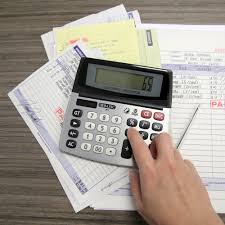
#TipTuesday - Pricing for Profit
Since we opened in 2012, we have been gotten a lot of questions from vendors. But one question gets asked the most, “How much should I charge for this?” There are many factors that go into pricing and I know many just wanted a simple answer like “$10.00”. But I always want to teach them how to calculate the price based on their time and cost of goods. Here are some helpful tips to do that:
A common approach is to calculate the cost of the product, add a desired profit margin percentage, and then round to a price that looks appealing to customers (e.g., $19.99 instead of $20). Consider market research and competitor pricing to ensure competitiveness.
If you buy something for $1; for a 50% profit margin, you'd sell it for $2.00. If you aim for a 100% profit margin, you'd sell it for $3.00. Adjust based on market research and competition to find a price that appeals to customers while ensuring profitability.
When dealing with vintage & antiques, do a little online research and see what others are trying to sell an item for. Remember just because it is listed for $64.95 does not mean it will sell for that price. But it will give you a general idea as there is usually more than one listing that you can view for comparison. If there are no comparisons for your item, fall back on your formula to price for maximum profit.
Perceived value plays a role in the pricing game too. Perceived value is a customer's own perception of a product or service's merit or desirability to them, especially in comparison to a competitor's product. Perceived value is measured by the price the public is willing to pay for a good or service. Perceived value is also a weighted value. Items that are heavy "feel" like they should cost more while lighter weights "feel" like they should cost less.
To factor in the cost of your time, estimate the number of hours it takes to make the product and determine your desired hourly wage. Add this labor cost to the cost of materials. Then, apply your desired profit margin to calculate the selling price. It might look like this:
{Selling Price} = {Cost of Materials} + {Labor Cost} + {Cost of Materials} \times {Profit Margin}
Break it down step by step, considering the cost of materials, your labor cost (hours spent making the product multiplied by your hourly wage), and the desired profit margin. Add these components together to determine the selling price for your product. This formula ensures your time is compensated along with material costs and desired profit. Adjust as needed based on market conditions.
Another way to add more profit is by adding .95 or .99 to the end of your price. Most customers don’t even notice this and it puts extra $ in your pocket everytime. Say you sold 20 items at $4 each, that would be $80, but if you sold 20 items at $4.99 it would be $99.80. Do that for a whole year and it could be a game changer!
We hope you found this information helpful. Look out for more helpful tips every Tuesday!